Science Results: Star Formation
| Spotlight | Image |
|---|---|
|
The SOFIA Legacy Program FEEDBACK
by Nicola Schneider, Alexander Tielens, and Anashe Bandari
Paper:
FEEDBACK: a SOFIA Legacy Program to Study Stellar Feedback in Regions of Massive Star Formation
|

|
|
The SOFIA/EXES Mid-IR High Spectral Resolution Library
By José Pablo Fonfría, Ed Montiel & Joan Schmelz |

|
|
Deuterated Hydroxyl as a Star Formation Tracer
By Timea Csengeri and Joan Schmelz
Paper:
SOFIA/GREAT observations of OD and OH rotational lines towards high-mass star forming regions
|

|
|
Constraining Magnetic and Gravitational Energies in Star-Forming Clouds
By Dennis Lee and Joan Schmelz
Paper:
HAWC+/SOFIA Polarimetry in L1688: Relative Orientation of Magnetic Field and Elongated Cloud Structure
|

|
|
Temperature and Density Layers in the Ghost Nebula
By Archana Soam and Joan Schmelz
Paper:
Spatial Variation in Temperature and Density in the IC 63 PDR from H
2
Spectroscopy
|
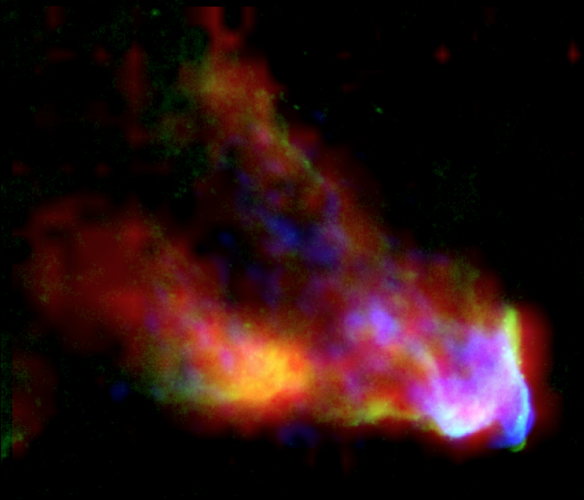
|
|
Role of Magnetic Fields in Cloud Destruction in the Keyhole Nebula
By Youngmin Seo and Joan Schmelz
Paper:
Probing Polarization and the Role of Magnetic Fields in Cloud Destruction in the Keyhole Nebula
|
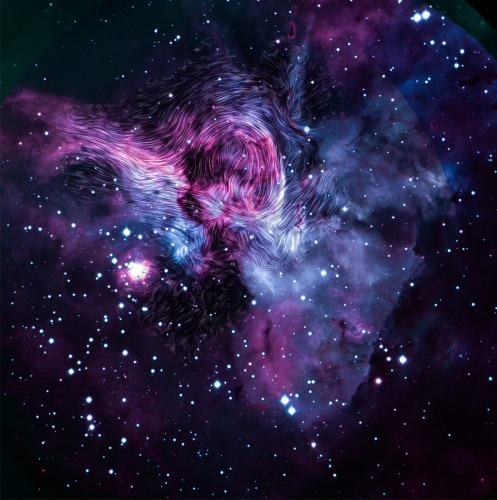
|
|
Stellar Feedback and Triggered Star Formation in RCW 120
By Matteo Luisi
Paper:
Stellar feedback and triggered star formation in the prototypical bubble RCW 120
|

|
|
Episodic Accretion in High-Mass Protostars
By James De Buizer and Joan Schmelz
Paper:
The Extraordinary Outburst in the Massive Protostellar System NGC 6334 I-MM1: Strong Increase in Mid-Infrared Continuum Emission
|

|
|
Episodic Accretion in Massive Star Formation
By Joan Schmelz and James Jackson
Paper:
Infrared observations of the flaring maser source G358.93-0.03. SOFIA confirms an accretion burst from a massive young stellar object
|
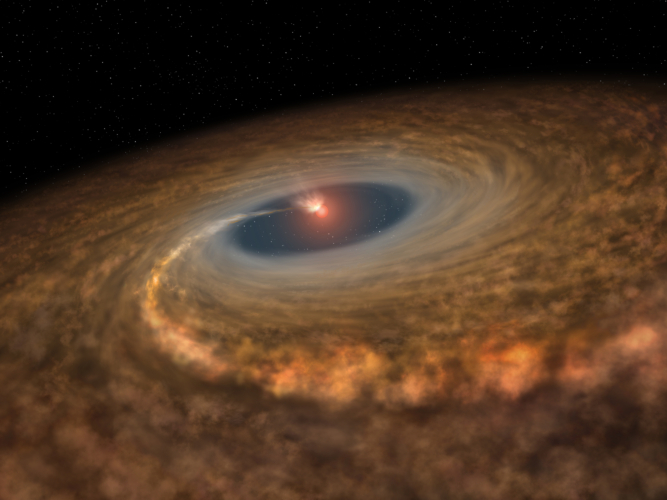
|
|
EXES Probes the Heart of Hot-Core Chemistry
By Sarah Nickerson, Naseem Rangwala, and Joan Schmelz
Paper:
The First Mid-infrared Detection of HNC in the Interstellar Medium: Probing the Extreme Environment toward the Orion Hot Core
|
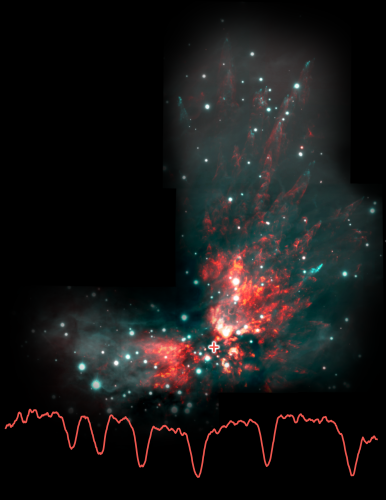
|
|
First Signs of Star Birth Triggered by Orion Wind
By Cornelia Pabst, Javier Goicoechea, and Joan Schmelz
Paper:
Expanding bubbles in Orion A: [C II] observations of M 42, M 43, and NGC 1977
|
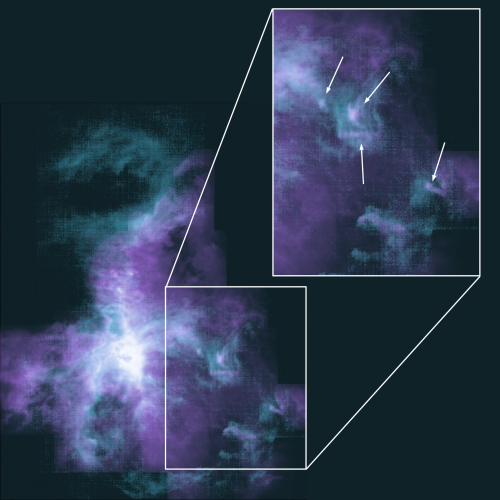
|
|
The Optical Depth of [CII]: the Implications for Galaxies both Near and Far
By Cristian Guevara and Joan Schmelz
Paper:
[C II] 158 µm self-absorption and optical depth effects
Photodissociation Regions (PDRs) are zones of the interstellar medium in which Far-UV photons dominate the thermal balance, chemistry, structure, as well as the distribution of the gas and dust. The incident FUV field photodissociates molecules, photoionizes atoms and molecules, and heats the gas and dust. |
![Average spectra of the [CII] emission for M17 SW superposed on a composite image Average spectra of the [CII] emission for M17 SW superposed on a composite image](/data/SOFIA/docs/sites/default/files/styles/lightboxgallery_height_500/public/Public/SOFIA_Spitzer_M17_inset.png)
|
|
Molecular Processing in the Disks of Massive Stars
By Andrew Barr, Alexander Tielens, and Joan Schmelz
Paper:
High-resolution Infrared Spectroscopy of Hot Molecular Gas in AFGL 2591 and AFGL 2136: Accretion in the Inner Regions of Disks around Massive Young Stellar Objects
|

|
|
A Magnetic Hourglass Detection for a Low-Mass Protostar
By Elena Redaelli and Joan Schmelz
Paper:
Magnetic Properties of the Protostellar Core IRAS 15398-3359
|
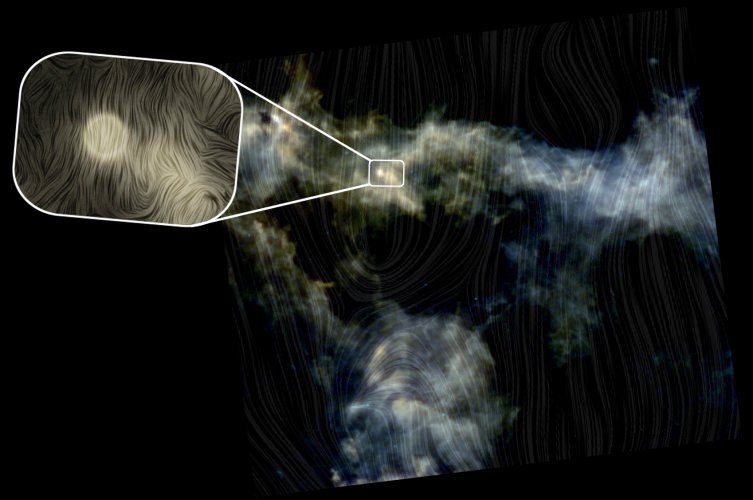
|
|
Magnetized Filamentary Gas Flows in Serpens South
By Thushara Pillai and Joan Schmelz
Paper:
Magnetized filamentary gas flows feeding the young embedded cluster in Serpens South
|

|
|
Massive Star Formation in the Omega Nebula
By Wanggi Lim and Joan Schmelz
|
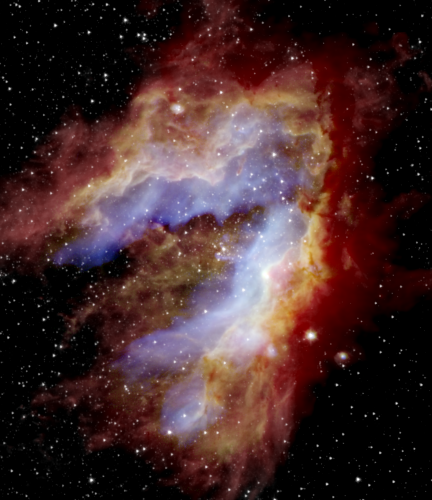
|
|
Planetary Collisions in a Binary Star System
By Maggie Thompson, Ralph Shuping, and Joan Schmelz
Paper:
Studying the Evolution of Warm Dust Encircling BD +20 307 Using SOFIA
Recent observations from SOFIA of a binary star system designated BD +20 307 indicate that there may have been a catastrophic collision between two planets within the last 10 years. |

|
|
The Cosmic Fireworks of Massive Star Formation
By W. Lim, J. De Buizer, R. Klein, and J. Schmelz (USRA)
Paper:
Surveying the Giant HII Regions of the Milky Way with SOFIA. I. W51A
|
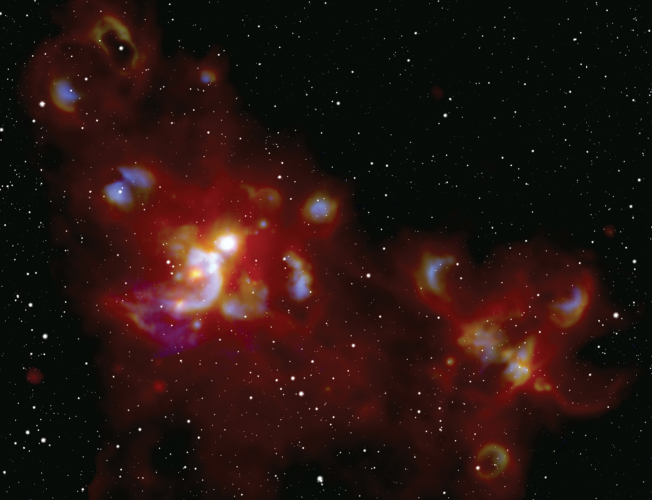
|
|
Lifting the Veil on Star Formation in the Orion Nebula
By Kassandra Bell and Joan Schmelz (USRA)
Paper:
Disruption of the Orion molecular core 1 by wind from the massive star θ
1
Orionis C
|
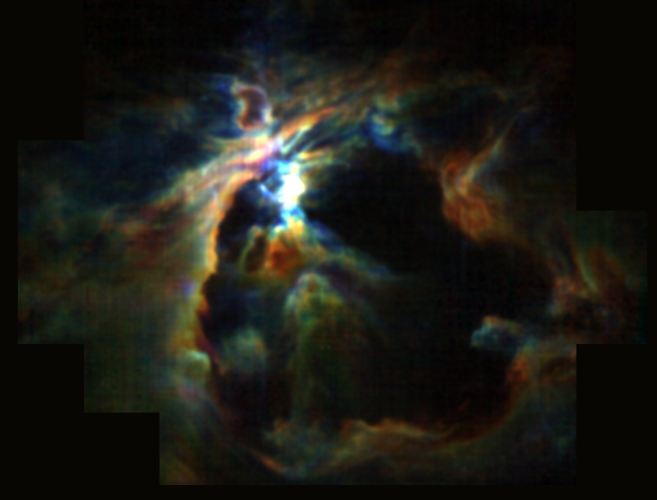
|
|
NASA’s SOFIA Observatory Captures Orion’s Dragon in 3-D
New data from NASA’s Stratospheric Observatory for Infrared Astronomy, SOFIA, reveal a three-dimensional (3-D) view of the Orion Nebula – Earth’s closest star-formation nursery – and a powerful stellar wind. Researchers can rotate, zoom in, and even dive through this data cube to better understand how stars are forming. |
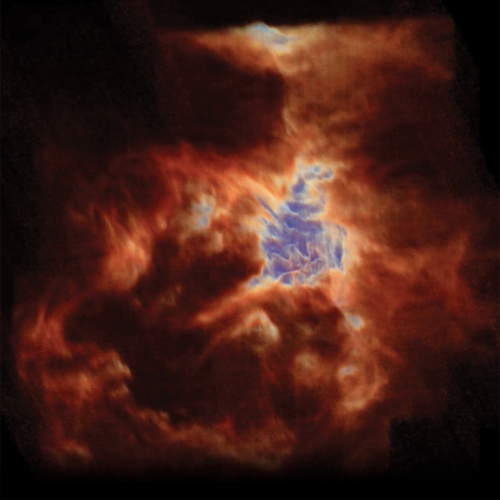
|
|
Cosmic Collisions: Unraveling the Mysterious Formation of Star Clusters
By Kassandra Bell and Joan Schmelz (USRA)
Paper:
The Inception of Star Cluster Formation Revealed by [CII] Emission Around an Infrared Dark Cloud
|
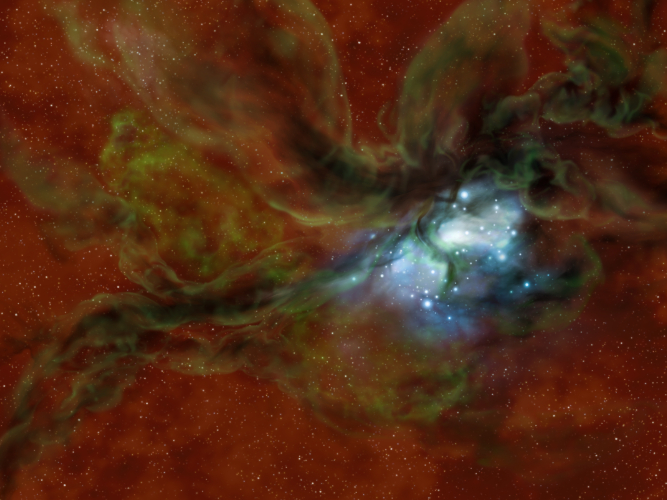
|
|
SOFIA Reveals Never-Before-Seen Magnetic Field Details
The Stratospheric Observatory for Infrared Astronomy, SOFIA, released new data from its recent Southern Hemisphere observations revealing the structure of celestial magnetic fields in the region known as 30 Doradus , or 30 Dor, at a scale that has never been seen before. |
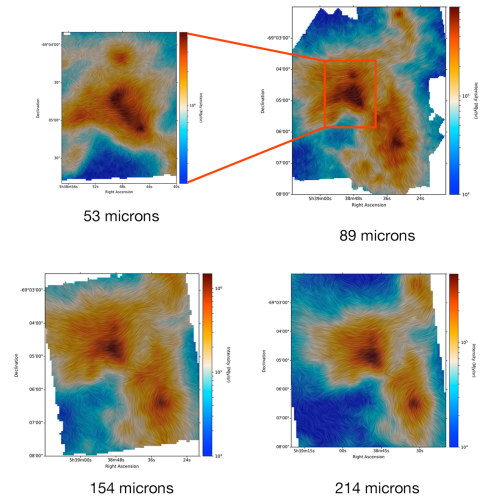
|
|
What’s Happening in Orion’s Horsehead Nebula?
Two research teams used a map from NASA’s Stratospheric Observatory for Infrared Astronomy, SOFIA, to uncover new findings about stars forming in Orion’s iconic Horsehead Nebula. The map reveals vital details for getting a complete understanding of the dust and gas involved in star formation. |
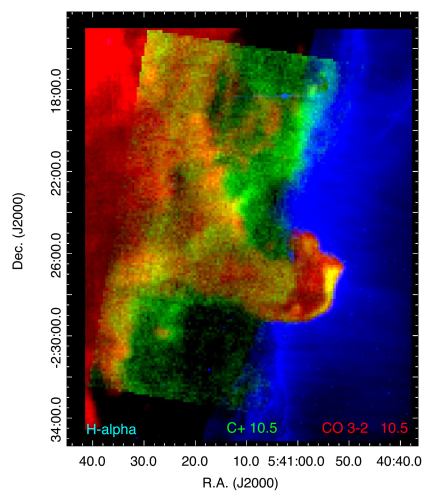
|
|
What Stars Will Hatch From The Tarantula Nebula? NASA’s Flying Observatory Seeks to Find Out.
To have a full picture of the lives of massive stars, researchers need to study them in all stages – from when they’re a mass of unformed gas and dust, to their often dynamic end-of-life explosions. |
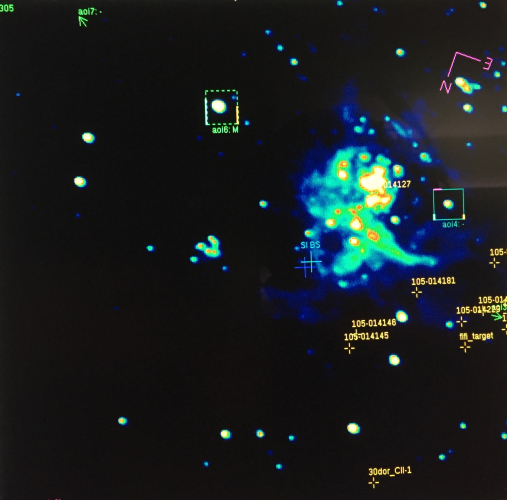
|
|
New SOFIA Observations Help Unravel Mysteries of the Birth of Colossal Suns
Astronomers are observing star-forming regions in our galaxy with NASA’s flying telescope, the Stratospheric Observatory for Infrared Astronomy, SOFIA, to understand the processes and environments required to create the largest known stars, which tip the scales at ten times the mass of our own Sun or more. |

|
|
Understanding Star Formation in the Nucleus of Galaxy IC 342
An international team of researchers used NASA’s Stratospheric Observatory for Infrared Astronomy, SOFIA, to make maps of the ring of molecular clouds that encircles the nucleus of galaxy IC 342. The maps determined the proportion of hot gas surrounding young stars as well as cooler gas available for future star formation. The SOFIA maps indicate that most of the gas in the central zone of IC 342, like the gas in a similar region of our Milky Way Galaxy, is heated by already-formed stars, and relatively little is in dormant clouds of raw material. |
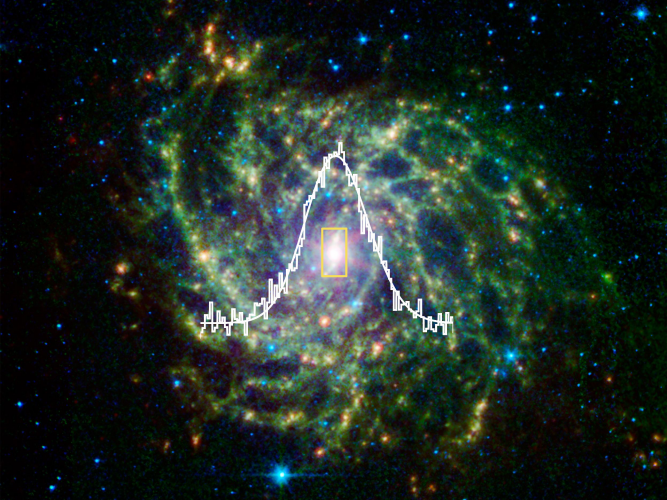
|